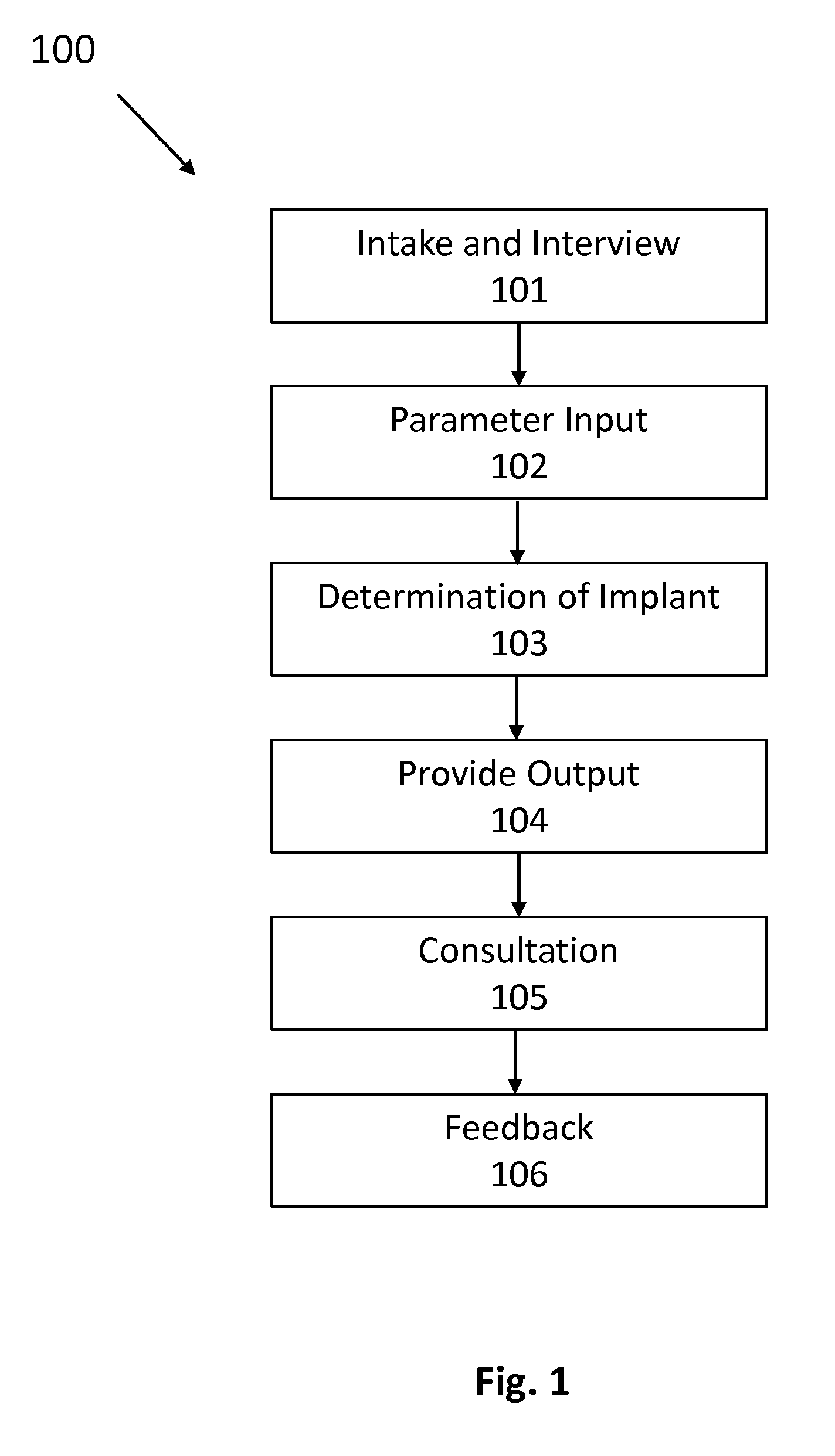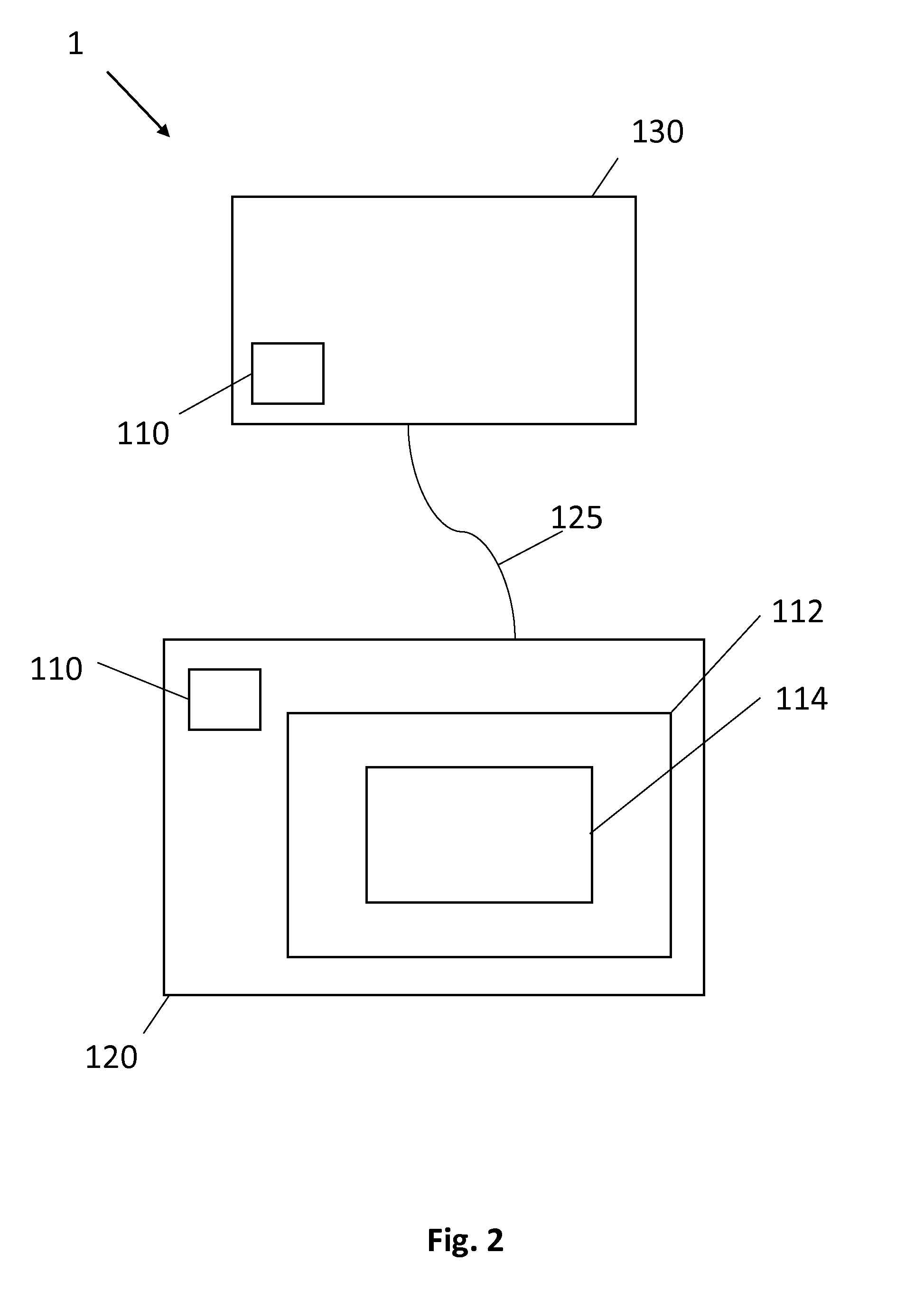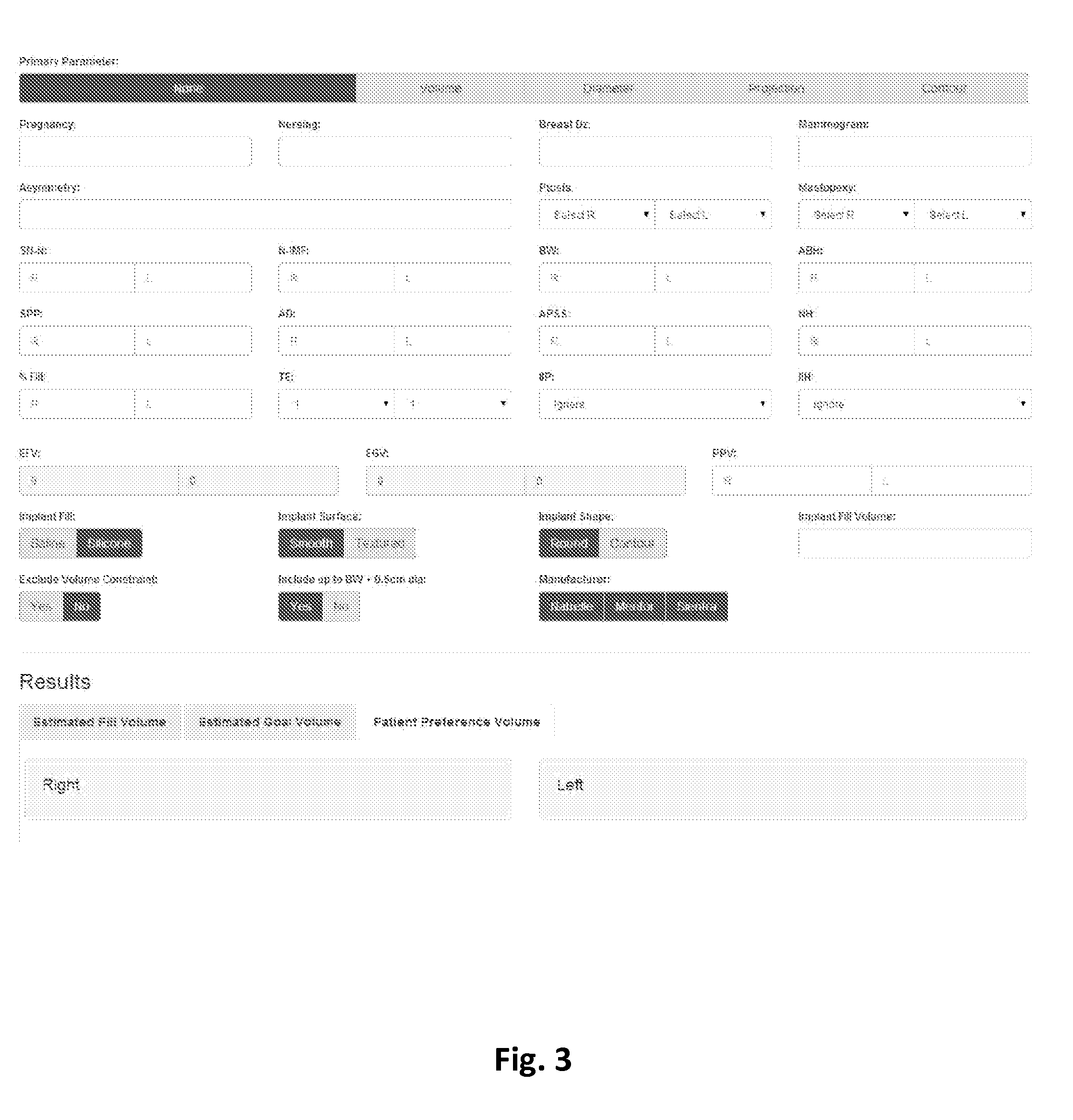Methods and devices for breast implant surgery and selection
a breast implant and pocket technology, applied in the field of breast implant pocket design and selection, can solve the problems of increasing the risk of complications, increasing the cost of surgery, and high cost of 3d disposable guide implants, and achieves the effects of less cost, less thickness, and flexibleness
- Summary
- Abstract
- Description
- Claims
- Application Information
AI Technical Summary
Benefits of technology
Problems solved by technology
Method used
Image
Examples
Embodiment Construction
[0022]Referring to the drawings, and in particular FIGS. 1-3, a first process 100 using an algorithm 101 of the present disclosure is shown. System 1 can comprise algorithm 110, device 120, and server 130. Algorithm 101 can be resident on device 120, or in cloud or server 130. Alternatively, a first portion of algorithm 110 can reside on device 120, and a second portion can reside on server 130. As discussed in greater detail below, device 120 can be any computing device capable of running algorithm 110 and communicating with server 130 as needed. Algorithm 110 provides or runs through a user interface 112 on device 120. A user, such as a doctor, physician, or surgeon can input desired parameters (described in greater detail below) into algorithm 110 through interface 112. These parameters can relate to a desired or optimal size of a breast implant for a patient. Algorithm 110 will then determine one or more acceptable implant candidates based on these inputs.
[0023]Process 100, in c...
PUM
| Property | Measurement | Unit |
|---|---|---|
| thickness | aaaaa | aaaaa |
| volume | aaaaa | aaaaa |
| diameter | aaaaa | aaaaa |
Abstract
Description
Claims
Application Information
 Login to View More
Login to View More - R&D
- Intellectual Property
- Life Sciences
- Materials
- Tech Scout
- Unparalleled Data Quality
- Higher Quality Content
- 60% Fewer Hallucinations
Browse by: Latest US Patents, China's latest patents, Technical Efficacy Thesaurus, Application Domain, Technology Topic, Popular Technical Reports.
© 2025 PatSnap. All rights reserved.Legal|Privacy policy|Modern Slavery Act Transparency Statement|Sitemap|About US| Contact US: help@patsnap.com



